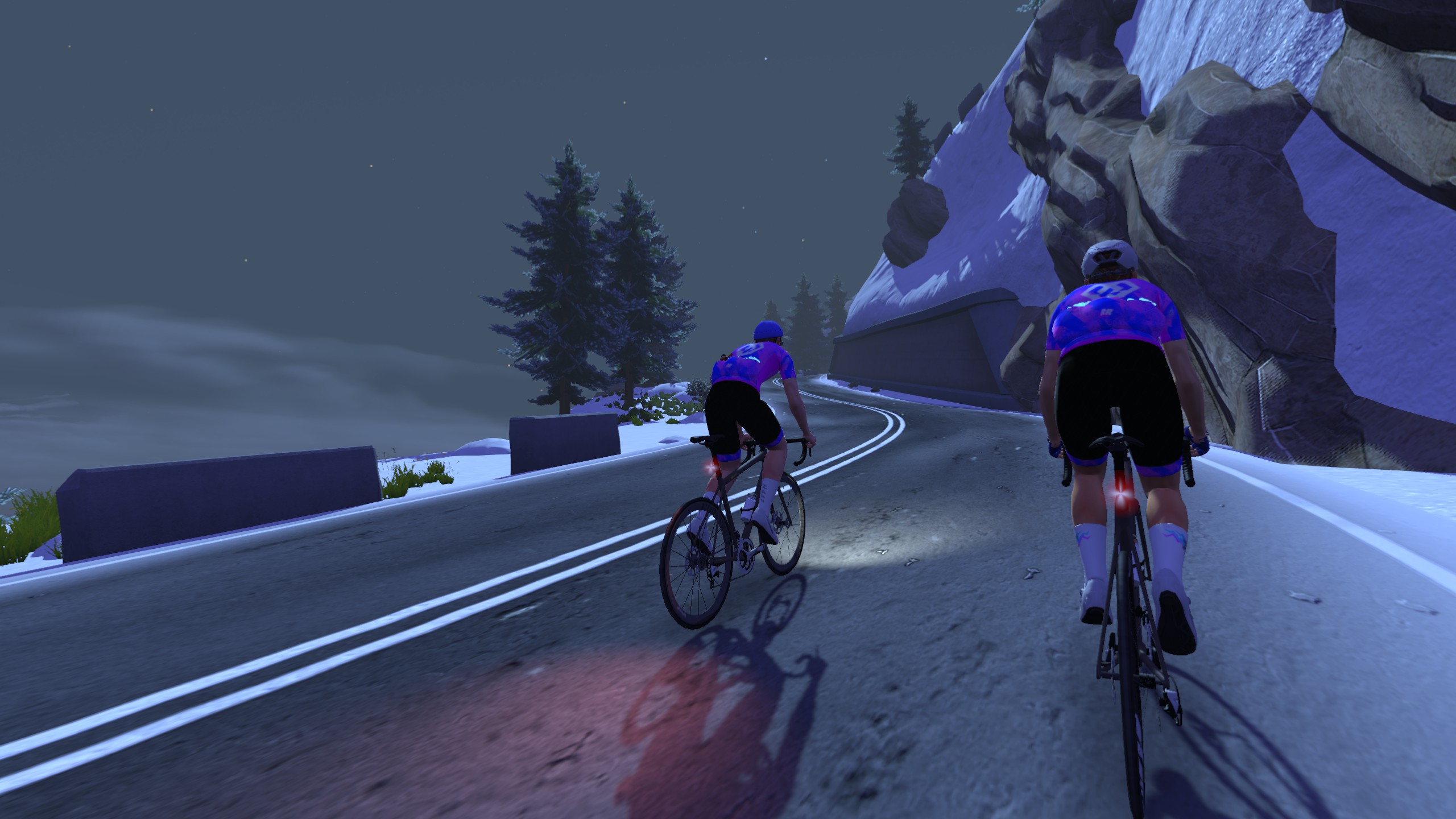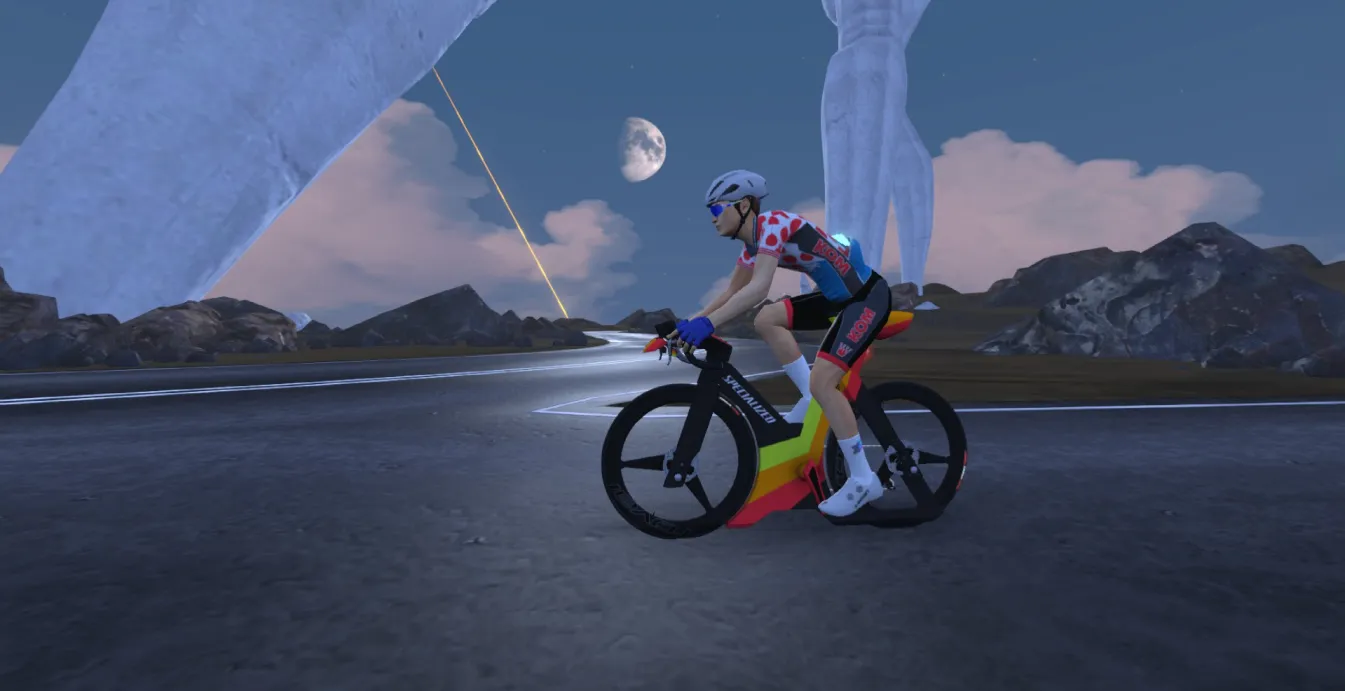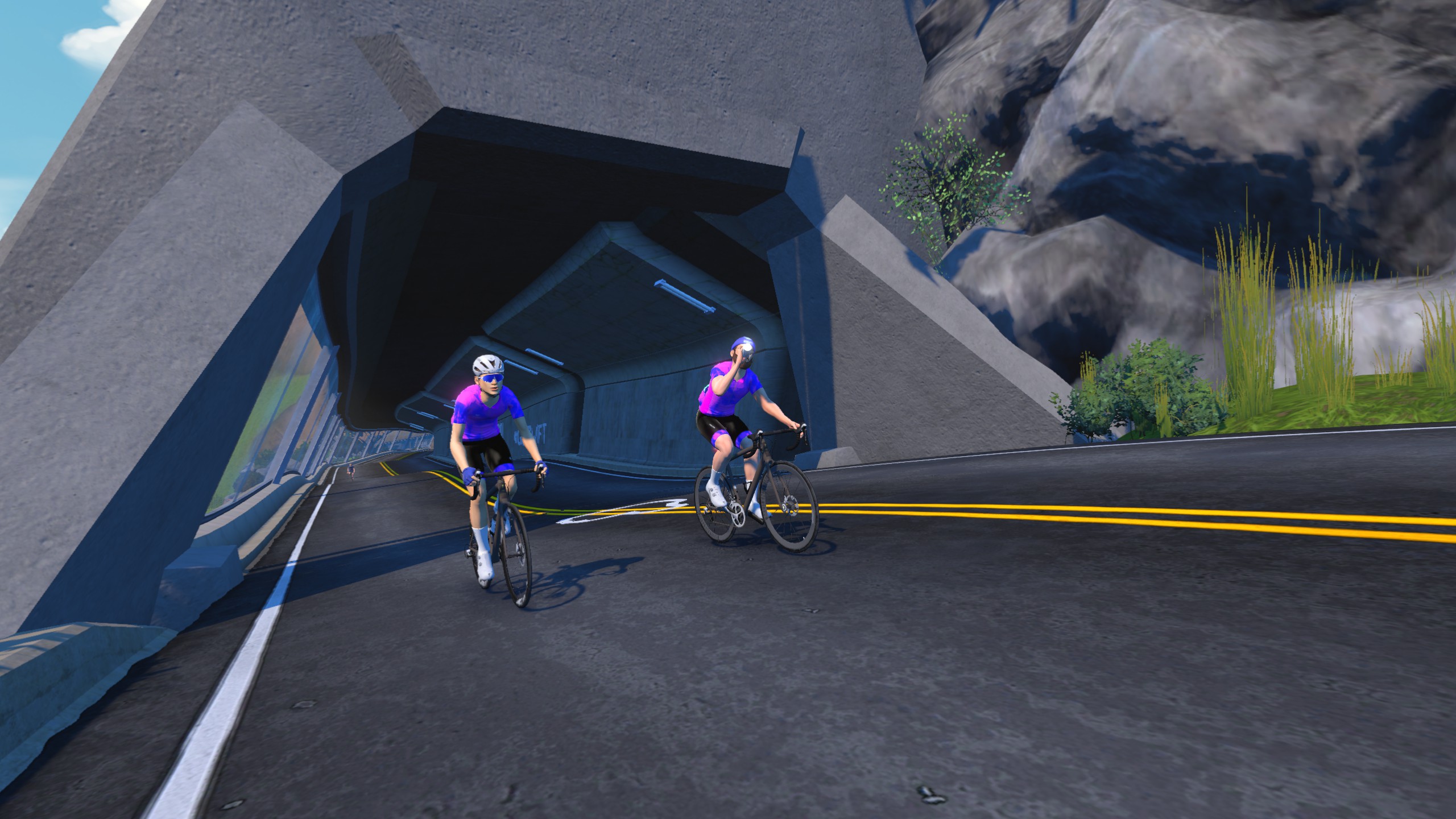With the FRR Charity day up the Alpe just round the corner or (twenty one) I thought who could I possibly get some tips from on how to climb on Zwift? It’s not like we have anyone in the Coalition who likes a sport of elevation gain?
Who else than the climbing superstar himself, the Strava Everesting 30-day challenge winner with a ridiculous 81,152m, our man in Ottawa, Matt Ladd!
So Matt, what do you love about virtual climbing on Zwift?
First off, thanks for the questions and for the great support from Coalition. I really like how time efficient it is to do a ton of climbing on Zwift. There are such a wide variety of climbs with the portals along with the big climbs such as the Alpe and Ventop. And new interesting climb portals are always being added regularly. You can also make things interesting, like doing Oh Hill No 20x…LOL Of course, there are always riders I know from Coalition and other clubs on these virtual climbs so always great to have a chat. But indoor climbing is really great because where I live (Ottawa, Canada), there are no really big climbs close by so it would basically be impossible to do the kind of massive climbing volume that I can do virtually.
Which Zwift climbing segments have been most rewarding for you, and what made those experiences stand out?
All of the climbs I do have been rewarding but I think the Ventop climbing segment has been the most rewarding, especially the challenge of doing 50 ascents in April really stands out because it was an extremely demanding challenge, definitely one of my toughest ever. At several points in the month, I was not sure if I would be able to actually complete it. For the FRR charity day in May 2024, I ended up doing 9x ascents of Ventop for 12,345 m over 17 hours so this has always been an epic climb. And to complete 51 ascents this April and be #1 in the Strava Everesting 30 day challenge is just something amazing and way beyond what I thought I could accomplish.

How have you customized your indoor setup specifically for climbing (equipment, fan placement, bike configuration)?
My indoor setup has definitely been optimized over the years. It is in the basement so the temperature ranges between 12 and 20c during the year. I have several large and smaller fans going, usually anywhere between 2-6 depending on the temperature. And I have a window nearby that I can easily open. My Kickr5 is mounted on an Inside Ride E-Flex rocker, which is a really amazing rocker setup and very different from a standard rocker plate. If you have a Kickr, I highly recommend the E-Flex, which has made my riding and climbing much more comfortable. I am still working on my position with small adjustments here and there. I generally do mostly seated climbing but try to change positions during longer rides.
What metrics do you focus on most during a Zwift climb (power, heart rate, cadence), and how do you use this data to improve or is it all about the elevation gain?
I do look at the metrics, more to maintain a constant power for pacing. My HR is quite low often and so is my cadence. Really though it is about elevation gain and setting new PRs on many climbs and PRs for weekly, monthly and annual climbing. Also amazing has been my fitness gains with a lifetime best wkg FTP, resting HR as long as 34 bpm and my best body composition at 46 years old. In fact, even when I was doing long distance triathlons 10-20 years ago, I was not anywhere close to being this fit. Last year was around 926 hrs of training and 700,000 m of climbing. This year I am at 275,000 m and on track for 800,000 m. I expect to hit 2 million m of climbing all-time on Zwift sometime later in July. Maybe I will have a special Coalition TTT to celebrate the milestone.
How has your climbing technique evolved since you started on Zwift? What specific form adjustments have made the biggest difference if any?
Overall, my climbing technique has not changed much but my bike is more adapted to me now. I am usually doing a lower cadence on these climbs, but make sure to keep it high enough to not have a knee destroyer cadence. Really, you do not want to have any knee issues. And I have been really lucky to avoid that so far. I have added strength including core strength and mobility training a few years ago, and these exercises can easily be done on the descents, when you are taking a break. I have a set of adjustable dumbbells and other fitness equipment which has been really helpful. Also, I did have a bike fit done a few years ago, which has helped my form and also a virtual fit with MyVeloFit.

On days when motivation is low, what specific strategies or mental tricks do you use to get through challenging Zwift climbing sessions?
Yes, that is a great question because for the April challenge my training data from intervals showed way beyond overreaching and my Whoop showed several red recoveries and I had substantial fatigue with such a high training load. In fact, 1620 was the load for my final week, with 32 hours of climbing! Many days I simply felt like I should not really be riding, but you know as they often say, it is all really a mental game. Once I got on the bike and started climbing I felt better, especially with some motivating electronic music. And physically I could do it but you have to convince your mind you can do it, that is my advice to anyone facing a tough challenge. For the April challenge I had to stay ahead of Le Mountain Goat from NSW and the last Saturday of the challenge I knew I had to put the hammer down with a massive climbing effort (4x Ventop so close to 167 km with 6,150 m) to stay on top.
What's your pacing philosophy for long Zwift climbs? Do you prefer steady efforts or variable power approaches?
My pacing philosophy is to be smart about it and take the long game approach (i.e. don't go too hard, too early, so you fade later on). Generally, I gravitate towards more of a steady effort, especially for super long climbs, but sometimes I do pick up the pace over short intervals for variety.
What's your nutrition and hydration strategy before and during longer Zwift climbing sessions? Has this changed as you've gained experience?
I have improved my strategy over the years through experimentation. My main sport drink is Gruppo Nutrition bike or run formula and then I usually have some real food as well, which is important for very long efforts. Anything really like pizza, sandwiches, fig bars, muffins, fruit, salty snacks, energy chews, cookies, chocolates and candy. It is especially important to have fun sugary and salty snacks on a super long effort and even some coca cola if fading. Generally, I am not that keen on energy bars and gels and would rather eat real food and other snacks.
What specific products or preparation techniques have you found most effective for preventing saddle discomfort during long indoor climbing sessions?
I have several good sets of bib shorts (very important) and have tried so many chamois creams and also diaper rash cream, but in the end I have settled on good old Vaseline. I also use a gel saddle cover for very long climbing efforts. My saddle is a Fizik model from 2008 and there is nothing similar to replace it. The saddle is still in great shape, so hopefully I can get several more years out of it before it is retired.

Finally, if you could design a new climbing feature or route for Zwift, what would it look like and why?
My biggest wish is for something like the old Magic Roads in RGT, if anyone remembers that totally awesome feature. But this feature would have a twist in that you would essentially design your own dream climb and then some generic scenery could be added. Then add in some climbing robo-pacers that you could set a specific pace for the climb you are doing. My reason for this feature is what if you want to build a 20 km virtual climb with a 20% average gradient…LOL
Thank you to Matt for being a great member of the Coalition community and for inspiring us with your climbing endurance!
